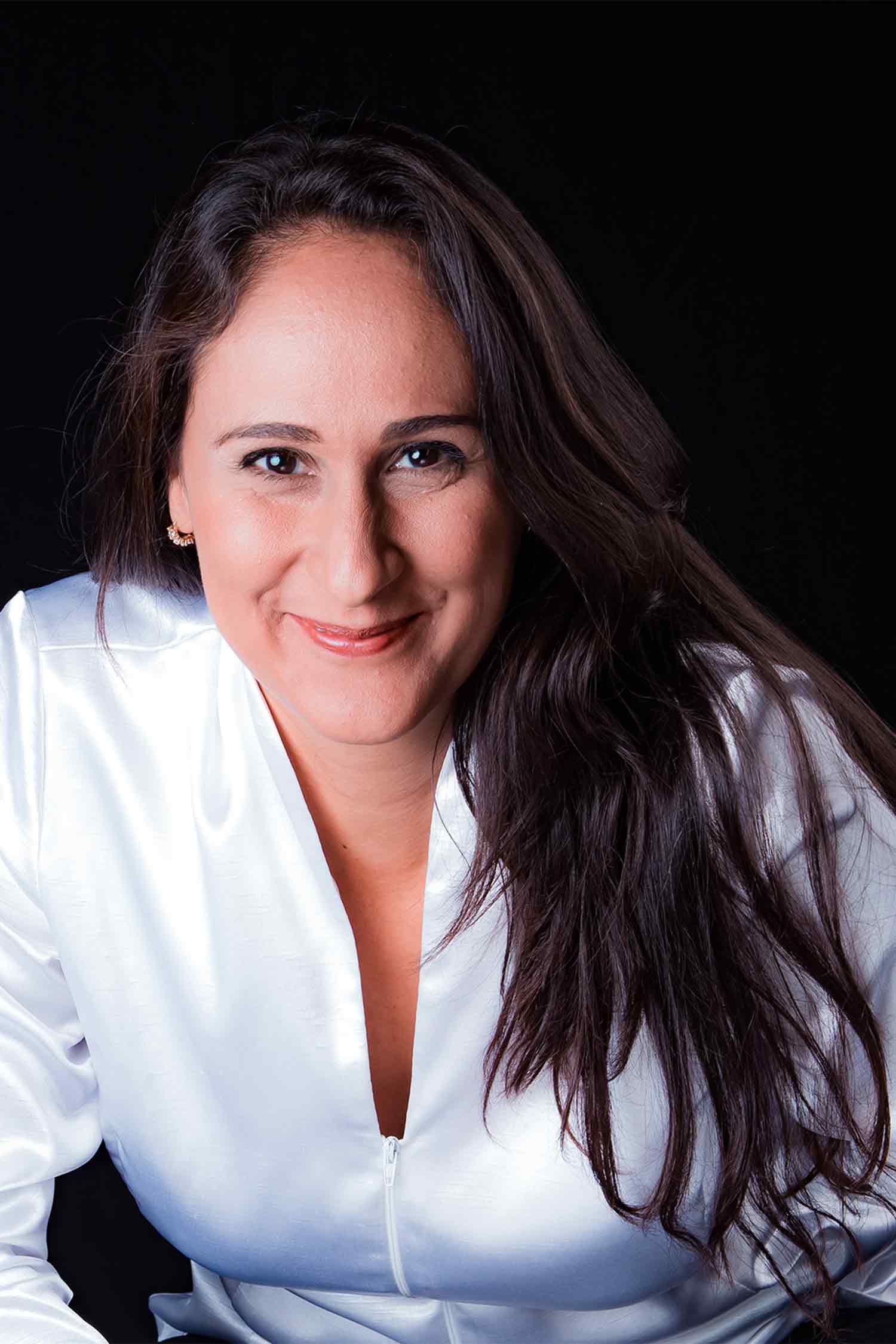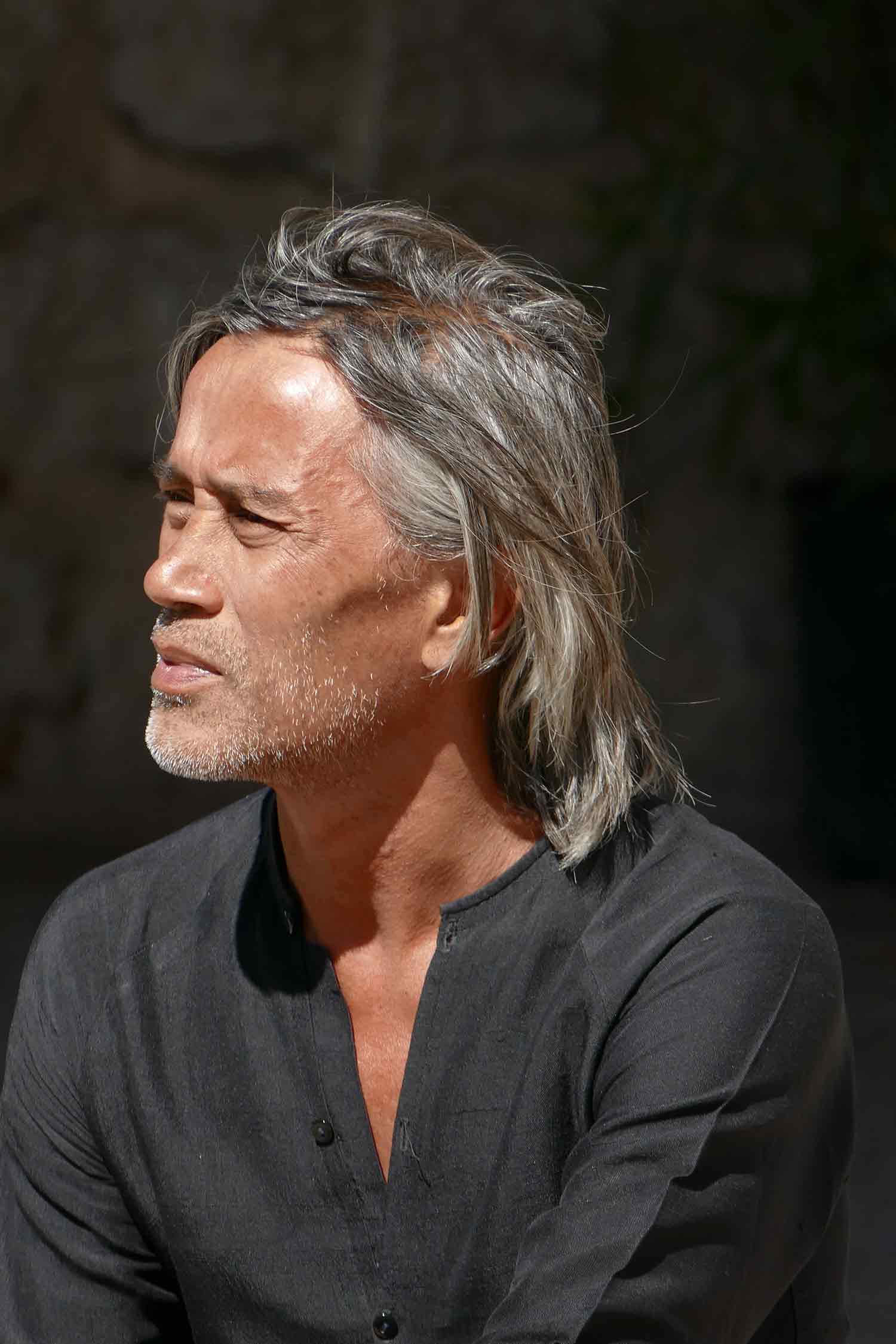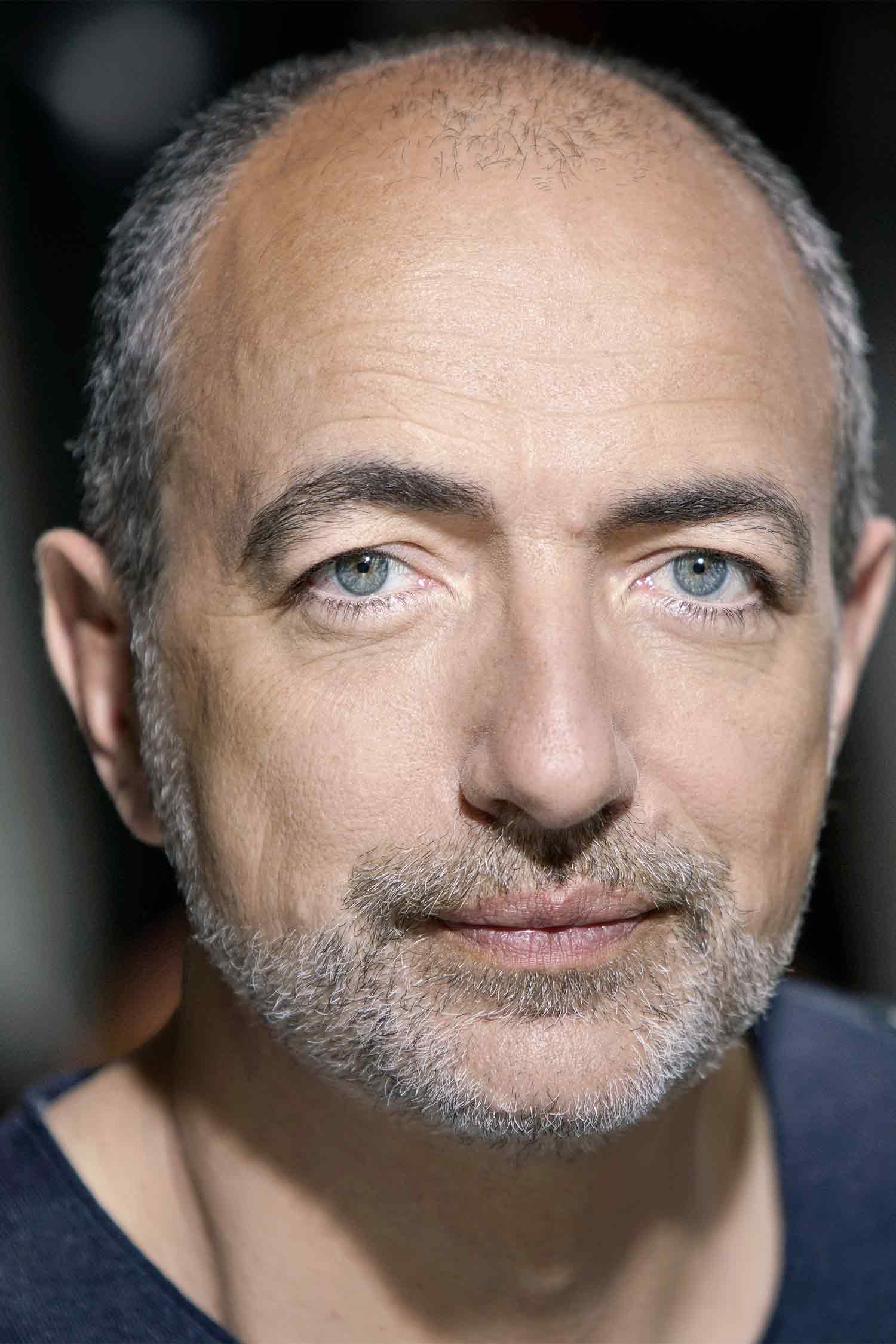solo baritone, solo cello, 1.1.2.1/2.1.0.0/[2perc (only Vibraphone, Crotales, Triangles)]/harp/str
First performance by the Orchestre de chambre de Paris conducted by Simone Menezes, with Baritone soloist Laurent Naouri, Cello soloist Albert Kuchinski (en partenariat avec le CNSMDP,) Chorégraphe by Thierry Thieû Niang, and Lighting by Jimmy Boury at the Philharmonie de Paris – Cité de la Musique, Paris, France, 27 January 2024.
Duration: 11 minutes
Music for me is an embrace of the world, a way to open myself to being alive in the world -- in my body, in my sounds, and in my mind. I care deeply about musicality, imagination, craft, clarity, dimensionality, an elegant balance between material and form, and empathy with the performing musicians as well as everyone who works in the presenting organizations.
Collaborating with the l’Orchestre de chambre de Paris conducted by Simone Menezes, with Baritone soloist Laurent Naouri, cello soloist Albert Kuchinski (en partenariat avec le CNSMDP,) choreographer Thierry Thieû Niang, and lighting design by Jimmy Boury has been an exhilarating experience and I am grateful to the many extraordinary colleagues who have made this partnership possible. The gorgeous, lyrical voice, and marvelous collaboration of Laurent Naouri was for me a huge inspiration for this composition. (The deadline for the composition was in advance of the solo cellist being selected.)
L’envers des destinées is respectfully composed in homage to Gabriel Fauré. Featuring soloist’s baritone and cello, the 11-minute composition unfolds in two 5-minute-and-30-second arcs played without a pause. The work focuses on the characters of Ygnold and Arkel, inspired by the following line from Arkel in Maeterlinck’s play (Pelléas et Mélisande, Act I, Scene 3) “Nous ne voyons que l’envers des destinées…” While both soloists participate in both arcs, the baritone leads in Arc 1 and the cello leads in Arc 2. The magnetism between the two soloists (two characters) is dimensional and nuanced in both arcs.
ARC 1 is inscribed with Maeterlinck’s words, “Ferme les yeux pour pardonner.” Bright and radiant, an optimistic blaze of a variety of bells opens the composition leaving resonance hanging in the air which melts into an elegant, lyrical, and at times almost chant-like contrapuntal web. Led by the expressive soloists and the poetic text, this polyphonic journey gradually unfolds. The flute and other woodwind solos, as if timeless and from a distance and in the higher registers, glide and dance in the air while silken and glassy high string harmonics weave in and out as they float elegantly as if from another stratosphere.
As ARC 2 begins, the score is inscribed with “Nous ne voyons que l’envers des destinées…” The harp leads a transformation into a poetic, dreamy new sphere. The solo cellist sings in the relatively high register orbited by the baritone’s expressions. Very gradually, the cellist descends to land upon the instrument’s lowest note, the open C string, where the score reads: “Il n’arrive peut-être pas d’événements inutiles…” Then, in final 100 seconds, perhaps in an effort to strive for "L’envers des destinées,” the cello proceeds to climb up, up, and up to the highest register toward a timeless destiny.
Across the two arcs, the music and musicians paint a sonic image of the deeper meanings of the powerful text. Organic and at every level concerned with transformations and connections, the carefully sculpted and fashioned musical materials are agile and spirited. Their flexibility allows pathways to braid harmonic, rhythmic, timbral, and contrapuntal elements which are constantly transformed- sometimes almost balletic, sometimes layered and reverberating with overtly cantabile, melodic resonance, pirouettes, and fulcrum points.
Music’s eternal quality is its capacity for change, transformation, and renewal. No one composer, musical style, school of thought, technical practice, or historical period can claim a monopoly on music’s truths. I believe music feeds our souls. Unbreakable is the power of art to build community. Humanity has and will always work together to further music’s flexible, diverse capacity and innate power.
“We spontaneously associate Pelléas et Mélisande with the opera that Debussy took from Maeterlinck's play. But this drama also inspired Fauré and Sibelius, authors of incidental music dating from 1898 and 1905 respectively. For this concert choreographed and prepared with amateurs (children, adolescents and seniors), Thierry Thieu Niang takes the musical movement throughout the space of the room. Centered on the characters of Arkel (grandfather of Pelléas) and Yniold (son of Golaud, Pelléas' half-brother), the evening’s concert, for which L’envers des Destinées was commissioned, questions the intimacy that develops between distant generations.”
- www.orchestredechambredeparis.com
ARC 1
"Je suis très vieux et cependant je n’ai pas encore vu clair, un instant, en moi-même ; comment voulez-vous que je juge ce que d’autres ont fait ? Je ne suis pas loin du tombeau et je ne parviens pas à me juger moi-même... On se
trompe toujours lorsqu’on ne ferme pas les yeux pour pardonner ou pour mieux regarder en soi-même."
ARC 2
Repeated from Arc 1 are two items:
"Je suis très vieux"
"comment pourrais-je juger"
"nous ne voyons jamais que l’envers des destinées... l’envers même de la nôtre...
[...] Il n’arrive peut-être pas d’événements inutiles…"
_Bernard_Martinez.jpg)



_May_Toyama.jpg)
To obtain examination or performance material for this
Augusta Read Thomas work, please contact Nimbus Music Publishing.
